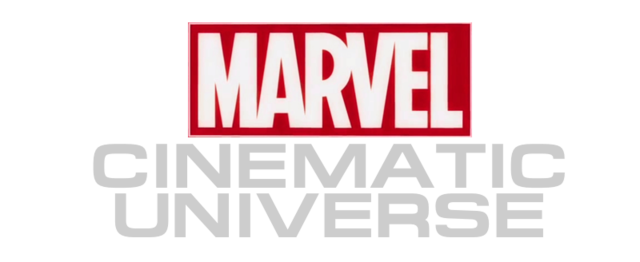Shang-Chi vs. Doctor Strange
December 10, 2021
WARNING: SPOILERS for Doctor Strange and Shang-Chi and the Legend of the Ten Rings.
Marvel has been cranking out blockbusters for over a dozen years, but not all their films are created equally. Each of these twenty-six movies has its own strengths, weaknesses, and reasons for merit. So far, some of their best works seem to be movies that overlap multiple genres; “Captain America: The First Avenger” is as much a superhero story as it is a war story. “Thor: Ragnarok” works very well as a comedy. The genre-blending tactic serves them quite well, with one large exception: Fantasy.
They attempted to fuse comic book action with magic and mysticality. I think they have reaped mixed results, to say the least. Until Ragnarok kicked the series into high gear, I considered Thor the weakest of the three different character series. In fact, “Thor: The Dark World” is often ranked among the studio’s worst films. “Doctor Strange” had mixed reviews out of the gate, but gradually rose in popularity with critics. Critics have voiced judgement about “Shang-Chi and the Legend of the Ten Rings” for how uninteresting the protagonist is.
I think the two best fantasy-fusion films that Marvel has produced are “Doctor Strange” and “Shang-Chi and the Legend of the Ten Rings.” These two films surprisingly complement each other well.
“Doctor Strange” is the earlier film and contains characters present in “Shang-Chi.” I believe “Doctor Strange” does a great job of developing its protagonist. Every decision he makes in this movie is his own. He has far more agency in this movie than Shang-Chi does in his — Strange is a very proactive character. When something happens that he can’t control, he fights back to impose his will. When he loses motor functions in his hands in a car accident, he scours the globe for answers. He takes it upon himself to stop Kaecilius, the main villain, from unleashing an even greater evil, in the process earning himself the mantle of Sorcerer Supreme. I believe this makes him a very compelling protagonist.
One of the only times Shang-Chi makes a decision for himself, the decision to escape from the Ten Rings, he made when he was fourteen. Most of the active choices in this movie are made by either the antagonists or the supporting cast members. Some scenes seem to depict him making active choices, such as the decision to go Macau to save his sister, but even those choices are made when he thinks he has no other options. This lack of ambition is even judged by characters in the universe, from Akwafina’s family to his own sister and father. I think he is flat and uninteresting character — I would even say Shang-Chi is the weakest part of the film.
However, I think “Shang-Chi and the Legend of the Ten Rings” does a great job introducing the eponymous rings. This movie shows a rare choice in worldbuilding by Marvel. By showing the audience the basic move-set of the Ten Rings, the audience can easily infer how more powerful moves work, allowing the writers to craft cooler and/or more powerful moves without creating plot holes.
Hard magic systems are defined by their clear, reliable, and logical rules and limits. The biggest strength of hard magic is the internal consistency at its core. I think it develops magic in a scientific way, grounding the story with rules and laws governing what is possible or not.
Soft magic stories are defined by establishing a few rules, and spells or abilities are unexplained or unclear. I believe the main benefit of this category is that if fewer rules have been established, there are fewer rules to break, and more possibilities. It is the more creative approach which often allows for more visually stunning effects.
Marvel normally goes with soft magic. “Doctor Strange” uses a lot of soft magic, allowing for mind-bending CGI effects and some fantastical set pieces, such as the Mirror Dimension or the realm of Dormammu, a god-like figure of evil and chaos that Kaecilius is trying to free from imprisonment. I prefer hard magic because my brain is wired more like an engineer than an artist.
That being said, the magic in “Doctor Strange” opens some questions that disturb the suspension of disbelief. Sling-rings are rings used for teleportation magic. Why didn’t anyone just teleport the villains into a volcano? The three sanctums fall pretty quickly. If some of the best and brightest magic users in the world guard them, how did they fall so fast? The movie leaves these questions unanswered in-universe, and that’s what bothers me. These questions are just left unclear for the convenience of the writers, but there is no explanation grounded in the story. Hard magic is usually immune to such questions by nature of design, but soft magic like Dr. Strange’s leaves me frustrated.
Thankfully, several questions were addressed or alluded to in later media, such as “Loki,” “Wandavision,” and “Avengers: Endgame.” The fact that “Shang-Chi” introduced magic that is easily understood provides a welcome change. I encourage fans to watch this movie if they prefer harder magic and interesting fighting choreography. I do not consider either film to be superior to the other. “Shang-Chi” does a poor job of developing and making the audience care about the protagonist, but “Doctor Strange” excels at it. “Shang-Chi” has a fantastic and developed antagonist, whereas “Doctor Strange” falters. If anything, I would recommend watching both of them!

